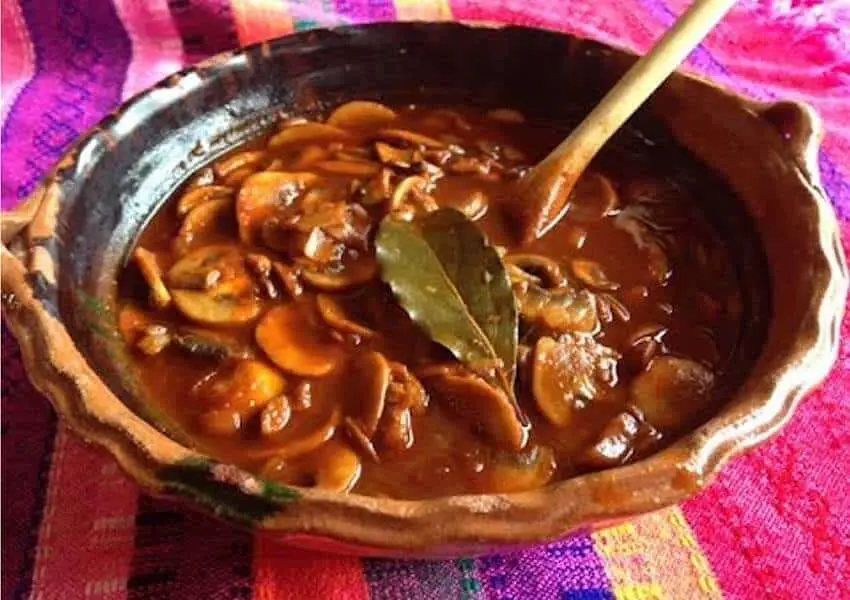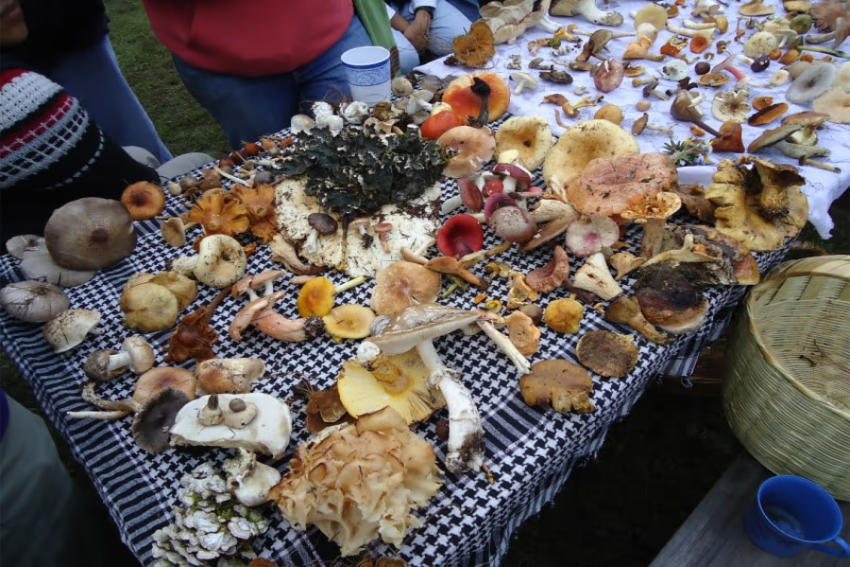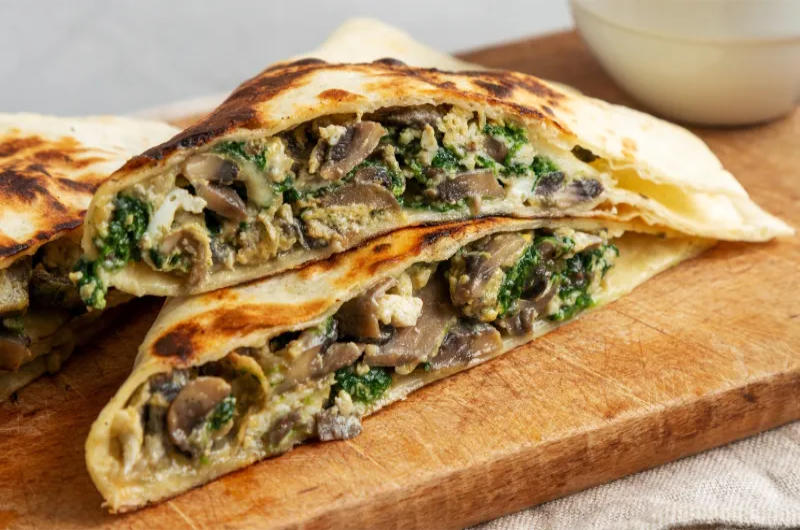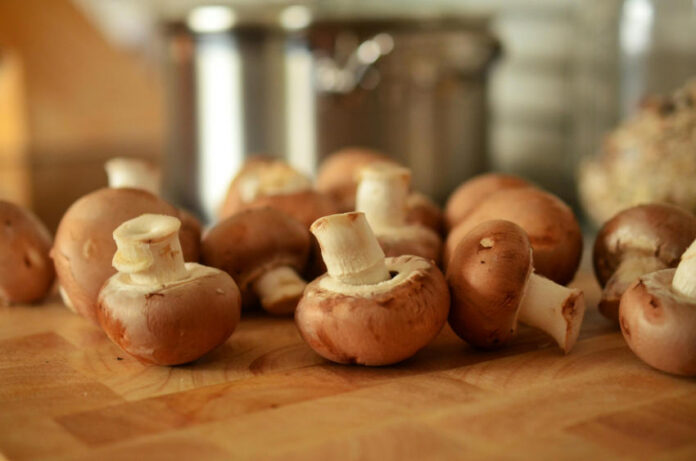Remember the saying “You don’t know what you have until you lose it”? For me, the realization came not in experiencing loss but when I was at a quesadilla stand. I was halfway through a bite when it struck me: Mushrooms are everywhere in Mexican cuisine, yet I had never consciously noticed.
Champiñones (mushrooms) with epazote are a classic pairing, for example, but have they always been this central to Mexican culture? I couldn’t remember. The French eat plenty of mushrooms, the Japanese too. Could their use here have been imported? Perhaps. But what about the mushrooms that are tied to ancient rituals?

Then I recalled that mushrooms once held a revered place in pre-Hispanic cultures, especially the hallucinogenic varieties. But what about the ordinary ones — the mushrooms that don’t send you hurtling into the depths of your subconscious?
Forgive me, friends, but today’s article emerges from my inability to stop circling this question: Where and why do mushrooms matter so deeply to Mexican cuisine?
The relationship between pre-Hispanic peoples and mushrooms was intimate and layered. Archaeological evidence, the sparse surviving codices and the chronicles of the Spanish conquistadors all confirm that wild mushrooms were central to the Mesoamerican diet — and that hallucinogenic mushrooms, in particular, played a role in ritual and festivity. Like much of pre-Hispanic food, mushrooms also carried medicinal value.
Mushrooms in modern Mexico: An evolution
With colonization, hallucinogenic mushrooms were suppressed for religious and cultural reasons. Officially, they were prohibited in New Spain; unofficially, traditions endured underground. Nonhallucinogenic mushrooms, meanwhile, found their way into colonial cuisine, folded into stews and seasonal dishes.
In the 20th century, mushrooms entered a new chapter. By the 1930s, efforts began to domesticate them, and by the 1950s, their commercialization had scaled up dramatically. Today, Mexico produces nearly 47,000 tons annually, 95% of which are the ubiquitous white button mushroom.

Alongside them, oyster mushrooms, cremini, portobello, shiitake and the famed cuitlacoche also appear in markets and kitchens.
But these cultivated species are only the tip of the iceberg: Mexico is home to more than 100,000 mushroom varieties. Of those, only 3,000 have been studied, and just 200 are considered edible. The gap between what is known and what remains unexplored is immense.
Mushrooms’ nutritional value
The current enthusiasm for mushrooms isn’t unfounded. Composed of 80% to 90% water, they are low in calories yet provide a mix of protein, carbohydrates and fiber. Rich in B vitamins — particularly B3 and B2 — and vitamin D, mushrooms can also supply, depending on the variety, potassium, selenium, iron, zinc and other minerals.
The health implications are striking: strengthened immunity, antitumor properties, cardiovascular support, improved gut microbiota, protection against neurological damage, regeneration of nervous tissue, enhanced cognition and impressive antioxidant, antimicrobial and antiviral capacities. For those with liver damage, mushrooms may even be therapeutic.
Champiñones y epazote: a classic combo

Few flavors call to mind Mexican street food as well as mushrooms cooked with epazote. At almost any quesadilla stand, you’ll find this combination: champiñones sautéed with onion (not my personal favorite, as regular readers know) and brightened at the end with the sharp, resinous notes in epazote. For me, it’s irresistible.
Nutritionally, the pairing is more than a delicious element of Mexican cuisine. Together, mushrooms and epazote amplify antioxidant and cardiovascular benefits, support gut health and offer anti-inflammatory effects in each remarkably nutrient-dense bite.
The versatility of this combination in Mexican cooking is staggering. You can fold it into sopa de milpa, serve it as a simple side dish or tuck it into quesadillas, tacos, sopes or huaraches. Use them as filling for empanadas, tamales and stuffed chiles, or use them as a tostada topping. Outside of Mexican cuisine, add them to pasta sauces and risottos.
A final note
Incorporating mushrooms into your diet is not only culturally resonant but also a proven way to bolster your health; to be clear, I’m recommending edible mushrooms — this portal is not in the business of encouraging journeys to other dimensions of your psyche. But should you choose that path, we won’t judge either.
If you’re curious about edible mushrooms in Mexico, visit your local market and ask about regional varieties. In Mexico City’s open-air food markets — the Central de Abasto or the Mercado de San Juan — you can encounter wild mushrooms from Tlaxcala, Puebla and Oaxaca such as hongos azules, hongo amarillo, hongo borrego, hongo chipotle, hongo yemita, el venado and los tecomates. Each one offers its own story, its own flavor and its own place in the sprawling fungal tapestry of Mexico.
María Meléndez is a Mexico City food blogger and influencer.
